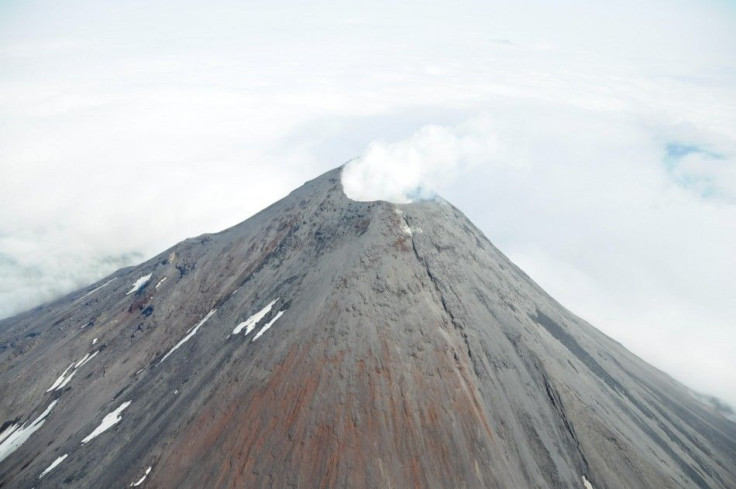Cleveland Volcano Alaska: Eruption Could Disrupt International Air Travel

Scientists are monitoring the remote Cleveland Volcano in Alaska's Aleutian Chain for an eruption that could launch an ash cloud and potentially threaten intercontinental air travel.
A new lava dome has been observed in the summit crater, the Alaska Volcano Observatory said Tuesday. However, it added that there have been no observations of ash emissions or explosive activity during this current lava eruption.
It's been an up and down year for the Cleveland Volcano as the alert status bounced back and forth from Yellow/Advisory to Orange/Watch multiple times due to the growth of a dome of lava in the summit crater area. The dome could potentially plug the conduit and cause the pressure behind the dome to rise until an explosive eruption occurs.
On Dec. 25 and 29 of last year, that's just what happened. Cleveland had one of its first major explosive eruptions since 2001 and the dome that had grown in the crater over much of the year was destroyed. Things had quieted down for a while until new satellite imagery showed that a new 130-foot-wide dome was already growing inside the summit crater.
This dome prompted the most recent warning on Tuesday from the Alaska Volcano Observatory that raised the alert status to Orange/Watch.
The 5,676-foot Cleveland Volcano, like others in the Aleutian chain, lies directly below the commercial airline flight path between North America and Asia. Consequently, a major eruption could severely disrupt international air travel.
Because the volcano is in a very remote area 939 miles southwest of Anchorage on the uninhabited Chuginadak Island, the human danger levels are low and there is no real-time seismic network in place.
The main concern is for the hundreds of flights that come over the Aleutians that would need to be alerted and/or rerouted to avoid volcanic ash clouds that could rise 20,000 feet above sea level, according to local authorities.
Some 90% of all air freight from Asia to Europe and North America flies over Alaska air space, and hundreds of flights fly through Anchorage's air space daily.
Due to the expense, it is unlikely that scientists will fly over the volcano given its current activity. For now, they must rely on satellite imagery or photos sent to the observatory from airplanes that pass over the volcano.
There is a webcam pointed directly at the volcano but, because of the location, getting a clear image can be difficult. On Wednesday, the cam was experiencing technical difficulties.
Whether the current activity will fizzle out or grow is uncertain.
The volcano's most recent significant eruption began in February, 2001 and it produced 3 explosive events that produced ash clouds as high as 39,000 feet above sea level, the observatory said Tuesday. The 2001 eruption also produced a rubbly lava flow and hot avalanche that reached the sea.
Dome-building events have preceded big explosive eruptions at other Alaska volcanoes, including Redoubt Volcano near Anchorage. Redoubt's 2009 eruption disrupted offshore oil production and caused numerous flight cancellations.
READ ALSO: The Ten Most Active Volcanoes in the World
© Copyright IBTimes 2024. All rights reserved.








